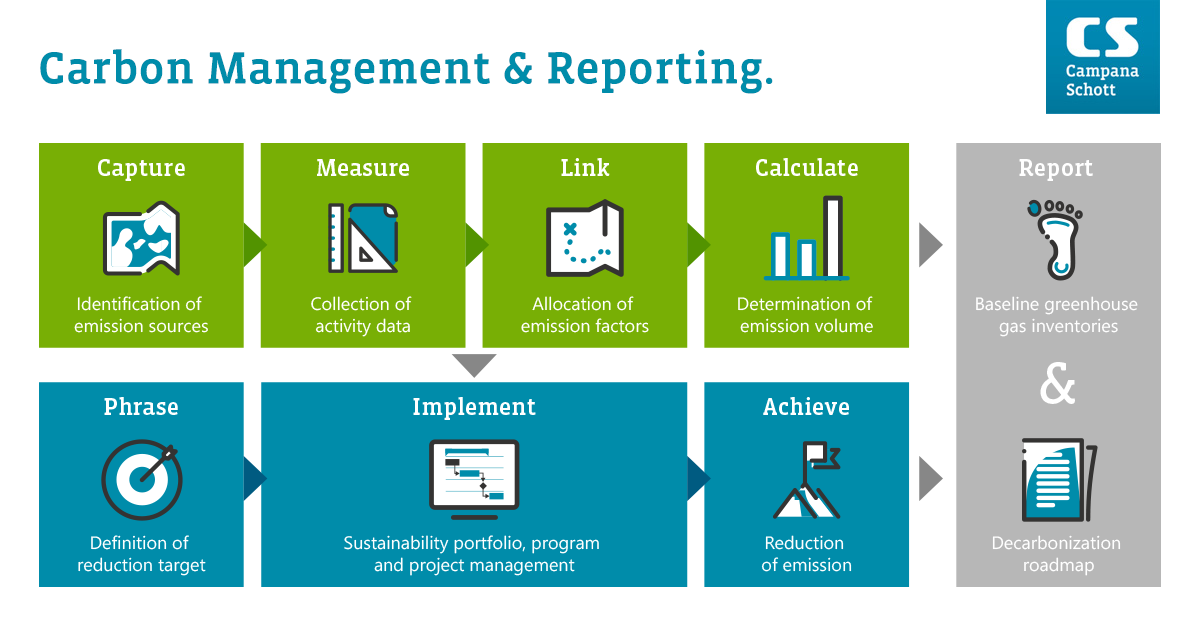Introduction
To our readers who are interested in sustainability, my name is Frank Helbig, and in my role as Expertise Lead, I am responsible for the many aspects of doing business with an eye to the needs and concerns of future generations on “Planet A.” To kick things off, let’s talk about the most common unit and biggest challenge of this century – the ton of CO2 equivalent. Every large company needs to be able to report its figures in this unit starting in 2025. I’ve been working on carbon sequestration and reducing carbon emissions for years, along with solid and verifiable ways to quantify and steer these efforts.
We’ve all seen labels like “climate-neutral,” “net zero,” and “climate positive.” But what exactly is behind those terms is hard to tell, which is why some civil society organizations consider them misleading. This is something I saw for myself with some surprise when I was at the gas station, filling up on climate-neutral gas. Can gas seriously be climate-neutral? More than 80 of these kinds of labels are currently under review in Brussels, and many are expected to disappear.
But aside from their disputed significance, labels like these have made an important contribution to a business practice that will soon be essential to doing business with integrity within the EU – CO2 management. After all, being able to quantify an entity’s carbon footprint, meaning taking stock of all greenhouse gas emission sources, is a prerequisite for a quality seal like climate neutrality.
Taking inventory of your processes as a competitive advantage
Anyone who has ever calculated a carbon footprint knows just how much work is involved. All of a company’s processes, from production to use of products and right through to the end of life, have to be captured and linked with verified emission factors. This generates enormous amounts of data that need to be processed across the company. Effective climate action also means optimizing this inventory with an eye to cutting emissions.
It might seem like a huge amount of work today, but it will be a competitive edge tomorrow. That’s because carbon management is becoming a success factor, what with carbon taxes, an increasingly short supply of EU emission trading offsets, rising energy prices, and, in the worst case, fines for violations of legal reporting obligations.
To prepare greenhouse gas inventories that can be audited, you have to know what you’re doing. It’s a complex undertaking! The GHG Protocol is the leading framework for quantifying how much a company contributes to climate change. Greenhouse gas (GHG) emissions are divided into three areas known as scopes, from direct to indirect emissions. Scope 3, for example, goes far beyond a company’s own sphere of influence, posing the biggest difficulties in terms of carbon management.
If emissions are captured under ISO 14040, you have a snapshot. At Campana & Schott, we’ve been doing this for some years now, and we know from experience where the pitfalls and challenges lie in transitioning from that snapshot to continuous carbon management. Where things really get exciting is when digitalization and sustainability come together. ERP, SAP, SaaS reports, and all kinds of software used to manage business processes can supply the data needed to calculate carbon intensity, meaning CO2 equivalent per product. These systems and the formats of data reports can be harmonized to provide full climate transparency across all business activities – practically effortlessly.

The right software to reach your climate goals
There are many kinds of carbon management software. Microsoft Sustainability Manager, the EcoVadis Carbon Action Model, and other solutions like those from SAP can help you gain an overview of the ecology of global supply chains. And this is something you do need to do, since complying with regulations is becoming more and more of a task for companies. And carbon emissions are actually one of the more readily identified dimensions in all this. Just think of human rights as part of the German Supply Chain Due Diligence Act (which, this being German, is all one word: Lieferkettensorgfaltspflichtengesetz). But back to CO2 and business: The crucial factor is whether a particular type of carbon management software fits into your IT environment. The key here is not additional software, but rather supplementation. After all, you’ll be using it regularly in the years to come. This is what I like about the Microsoft Sustainability Manager. It can be connected to data sources used for your existing IT environment and interface with external sources so you can export ESRS-compliant reports. This helps to identify gaps in data availability and lay the groundwork for automation of these processes.
In summary, improving the availability of data on GHG-related emission sources is a key prerequisite for a climate-friendly enterprise. By visualizing business processes, linking emission factors together in an inventory, and automating the collection of data, companies can identify areas where improvement is needed and set scientifically driven climate goals. This is the heart of carbon management. Dashboards, infographics, and automated reports are just the icing on the cake, whether for impactful ESG performance, taxonomy-compliant business models, or for your clients.

